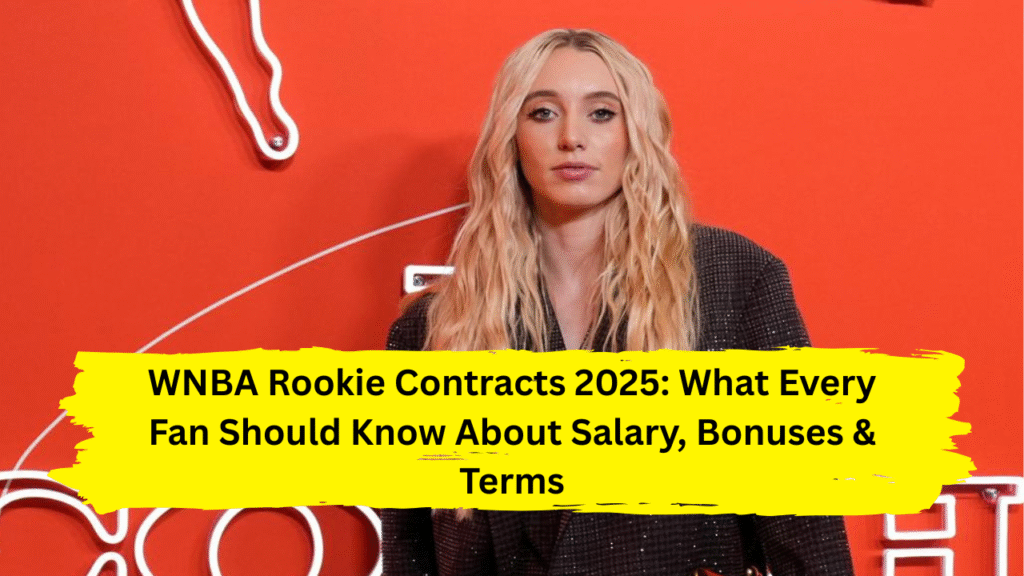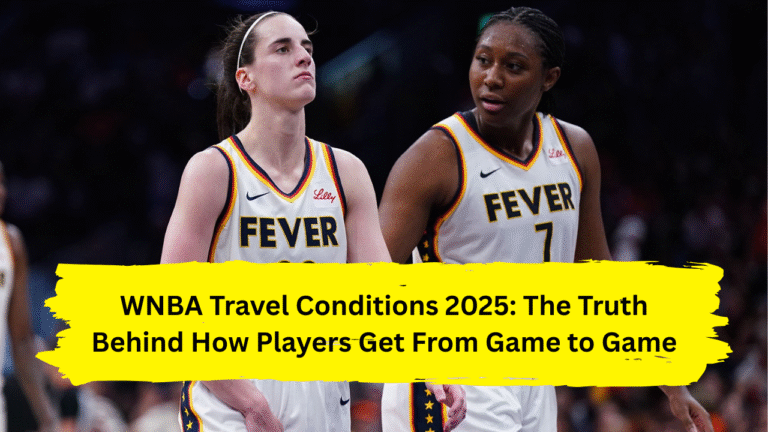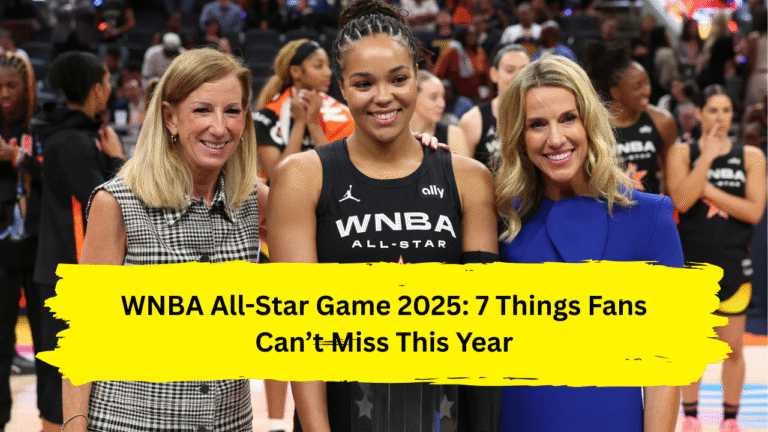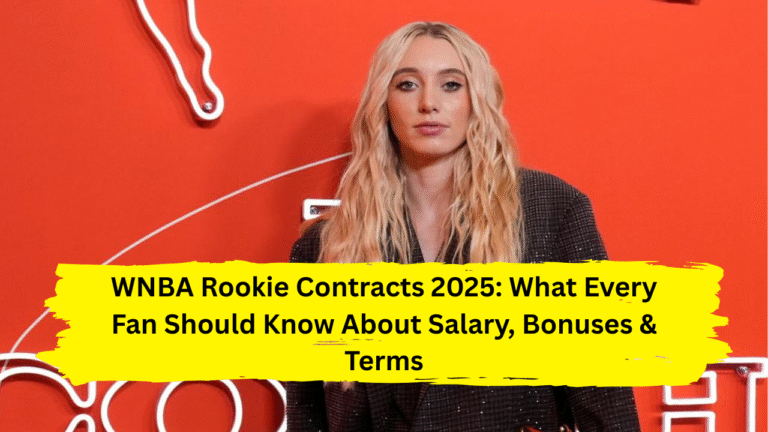
Curious about WNBA rookie contracts 2025? Learn how much first-year players earn, contract structures, bonuses, and how it compares to past seasons.
As the WNBA continues to grow in popularity and exposure, more fans are asking a big question: How much do rookies actually make in the league?
The answer is… more than before — but still not nearly as much as they deserve.
Whether you’re tracking your favorite college star’s leap into the pros or just curious about the business side of the game, this guide breaks down everything you need to know about WNBA rookie contracts 2025 — including salary structure, bonuses, contract length, and how it all compares to past years.
Why WNBA Rookie Contracts Matter in 2025
The 2025 rookie class might be the most hyped in league history. With players like Caitlin Clark, Angel Reese, Kamilla Cardoso, and others making headlines, fans are tuning in like never before. But despite the massive viewership, brand deals, and media coverage, rookie contracts in the WNBA are still surprisingly modest compared to other pro sports leagues.
💬 “People are watching us now. We’re proving our worth — and it’s time our contracts reflect that.” – Angel Reese, during a post-game interview.
WNBA Rookie Contracts 2025: Salary Structure Explained
Rookie contracts are primarily determined by:
- Draft position
- Years of service allowed (4 years max)
- Team salary cap
Here’s a breakdown of the 2025 rookie scale:
| Draft Position | Base Salary (Year 1) | Total 4-Year Value (Estimate) |
|---|---|---|
| #1 Pick | $76,535 | ~$338,000 |
| Top 4 Picks | $74,305 – $76,535 | ~$320K–$338K |
| First Round | ~$70,000+ | ~$300,000+ |
| Second Round | $65,000 – $68,000 | Shorter/partially guaranteed |
| Third Round | Often non-guaranteed | Camp invite only |
🧠 Source: WNBA CBA & 2025 projected scale via WNBA.com
How WNBA Rookie Contracts Work
📝 Length of Contract
- 3 years guaranteed
- Team option for 4th year
- Restricted free agency after contract ends
💰 Base Pay vs Bonuses
- Players receive a fixed base salary
- Signing bonuses are rare (unlike NBA)
- Performance incentives are limited in rookie deals
🏆 Endorsements Fill the Gap
While rookie contracts are modest, NIL deals and sponsorships (like Nike, Gatorade, Reebok) massively boost income for top players like Caitlin Clark and Angel Reese.
Rookie Deals vs Veterans: The Salary Gap
Let’s compare a 2025 rookie vs a top-tier veteran:
| Player Type | Average Annual Salary |
|---|---|
| Rookie (Top Pick) | ~$76,000 |
| Veteran All-Star | $200,000 – $250,000+ |
| League Max Salary | $242,000 (2025 cap) |
That’s a huge gap, especially when rookies like Clark and Reese are bringing in millions in revenue and attention.
📰 Also Read: Latest Trending News
Who Negotiates Rookie Contracts?
Rookie deals are based on the CBA (Collective Bargaining Agreement), so there’s very little room for negotiation unless you’re a free agent or undrafted.
However, agents still:
- Assist with marketing & sponsorships
- Help with long-term contract planning
- Negotiate off-court income streams
So while players can’t ask for more salary upfront, they can boost their financial profile through brand deals.
Do WNBA Rookies Get Signing Bonuses or Perks?
No major signing bonuses are offered in rookie deals — but rookies may receive:
- Relocation assistance
- Travel stipends
- Access to team housing or support services
- Per diem on road trips (~$70/day)
Some teams also offer rookies individual performance bonuses based on team success or milestones (e.g., Rookie of the Year).
Biggest Rookie Contracts in 2025
Here are the top WNBA rookie contracts 2025 based on draft order and projections:
- Caitlin Clark (Fever) – ~$76,500 base salary
- Angel Reese (Sky) – ~$75,000
- Kamilla Cardoso (Sky) – ~$74,500
- Rickea Jackson (Sparks) – ~$74,000
- Alissa Pili (Lynx) – ~$72,000
These numbers don’t include endorsement deals — which, in Clark’s case, are likely in the seven-figure range annually.
How NIL Changed Rookie Expectations
Thanks to NIL (Name, Image, Likeness) deals in college, rookies are now:
- Entering the WNBA with massive platforms
- More selective about when they go pro
- Demanding better league treatment and visibility
In fact, some stars delayed entering the WNBA because their NIL earnings were higher than rookie salaries.
What the CBA Says About Rookie Compensation
The current WNBA CBA (signed in 2020 and running through 2027) provides:
- Increased minimum salaries
- Better travel accommodations
- Full paid maternity leave
- Expanded revenue sharing (starting in 2025)
But many argue it’s still not enough, especially as the league grows and TV money increases.
How Fans Are Supporting Change
Fans play a huge role in the rookie contract conversation:
- Buying jerseys and merch
- Watching live games and streams
- Engaging with rookies on social media
- Pushing for fair pay and benefits
When fans show up, salaries will rise. Period.
Final Thoughts on WNBA Rookie Contracts 2025
While WNBA rookie contracts 2025 are still behind NBA and even some overseas leagues, the landscape is changing — fast. With more public attention, stronger rookie classes, and growing fan support, the pressure is on the league to offer fair compensation.
Players like Caitlin Clark and Angel Reese are doing more than scoring points — they’re opening doors. And the next generation of WNBA rookies will benefit from everything this class builds.
FAQs About WNBA Rookie Contracts 2025
Q1: What’s the salary for the #1 overall WNBA pick in 2025?
Approximately $76,535 for year one, increasing slightly each season.
Q2: Do WNBA rookies get signing bonuses?
Not typically. Rookie contracts are fixed under the CBA and bonuses are rare.
Q3: How long are WNBA rookie contracts?
Standard is 3 years guaranteed, with a team option for a 4th year.
Q4: Can WNBA rookies make money from endorsements?
Yes — and many do! NIL and brand deals are often worth more than their rookie salary.
Q5: How do WNBA salaries compare to overseas leagues?
Overseas players can sometimes earn 3–5x more, especially in Russia, Turkey, or China.




